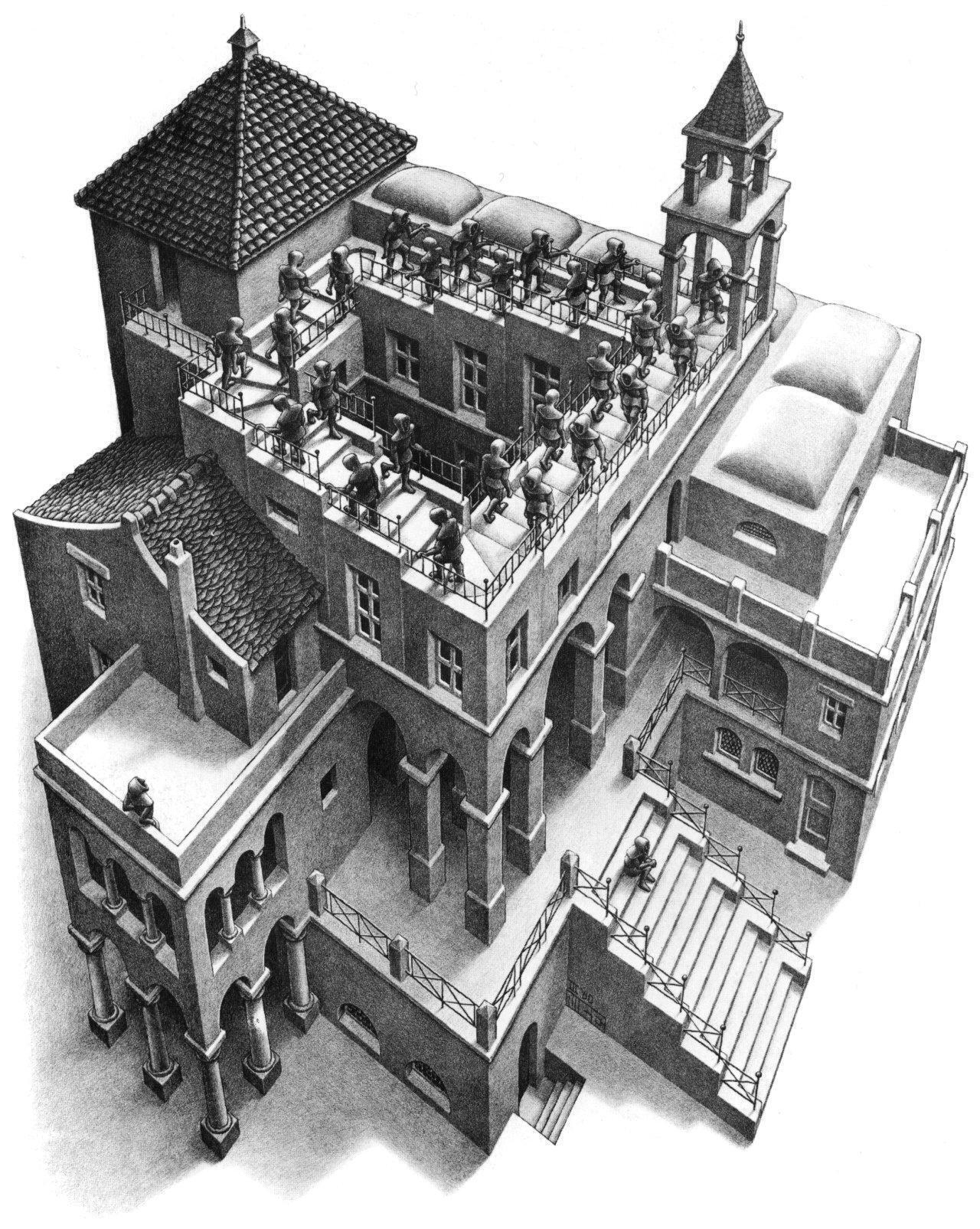A COURSE OF LECTURES: DISSYMMETRICAL SIMILARITIES
February 18, Wednesday, 7:30 pm
Piet Mondrian—Maurits Escher
Irina Kulik
Dutch painter Piet Mondrian (1872–1944) simultaneously with Kandinsky and Malevich laid the foundations of abstract painting. An important contributor to the De Stijl art movement, he developed his famous “neoplastic” works—a white ground, upon which was painted a grid of vertical and horizontal black lines and the three primary colors—in response to Cubism in the early twentieth century. Unlike the Cubists, however, his work was tied to spiritual concerns.
Maurits Escher (1898–1972) was a Dutch graphic artist, a master of puzzles and optical illusions. In his intricately detailed woodcuts and lithographs, he creates worlds that defy logic—stairs lead nowhere and water flows upward. His work had a strong mathematical component, and many of his drawings were built around impossible objects such as the Necker cube and the Penrose triangle, as well as tessellations, polyhedra, and geometric distortions. His works were often used on the covers of mathematical and scientific textbooks, and he created a large number of designs for institutions, including Metamorphosis III for the Royal Mail Netherlands.
Entrance is free, space is limited, please arrive early.
Irina Kulik (b. 1970) is an art critic, cultural studies expert, PhD, lecturer at the Institute of Contemporary Art (ICA Moscow), the author of numerous publications on contemporary art, cinema and modern music.
Images:
1. Piet Mondrian. Broadway Boogie-Woogie. 1942-1943. Oil on canvas. 1.27 m x 1,27 m. Museum of Modern Art. New York. USA
2. Piet Mondrian. Composition C (No.III) with Red, Yellow and Blue. 1935. Oil on canvas. 56 x 52,2 cm Private collection
3. Maurits Escher. Cubic space division. 1953. Lithograph. National Gallery of Art. Washington. USA
4. Maurits Escher. Ascending and Descending. 1960. Lithography




